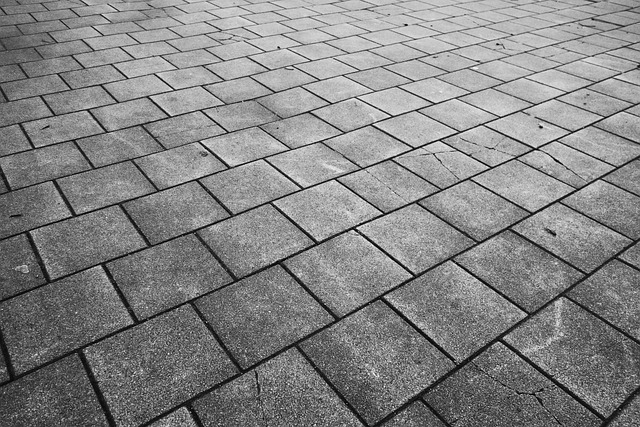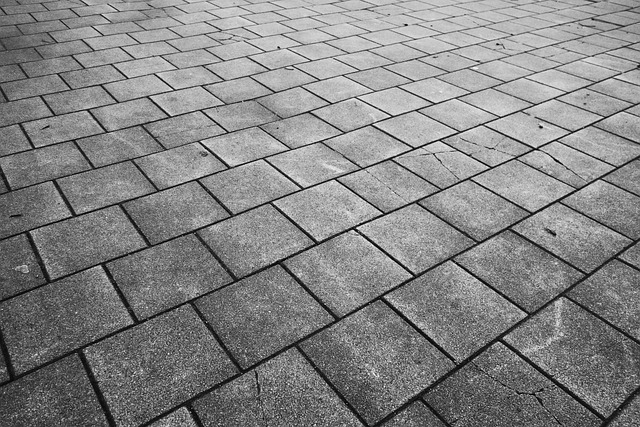Tile sealing protects floors from moisture, dirt, and stains, extending the lifespan of tiles in high-traffic areas. The process involves selecting a suitable sealant (penetrating or topical) for specific tile types and applications, followed by proper preparation (cleaning, drying). Sealant options include silicone, polyurethane, and epoxy, each with unique benefits. After choosing the right sealer, apply it evenly, let it dry, and maintain the surface with regular cleaning, ventilation, and quick leak responses. Avoid common mistakes like skipping cleaning or using incompatible sealants to ensure optimal results.
Tile sealing is a crucial step in maintaining the beauty and durability of your tiled surfaces. This comprehensive guide delves into the world of professional tile sealing, covering everything from understanding the basics to choosing the right sealer for your needs. Learn about the numerous benefits and advantages of sealing your tiles, and follow our step-by-step application guide for optimal results. Discover common mistakes to avoid and essential maintenance tips to keep your tiles looking their best.
Understanding Tile Sealing: The Basics

Tile sealing is a crucial process that protects your tiles from moisture, dirt, and stains. It involves applying a protective coating to the tile surface, which creates a barrier to prevent damage over time. This method is particularly important for areas with high foot traffic or exposure to water, such as kitchens, bathrooms, and outdoor spaces.
The basics of tile sealing entail choosing the right sealant for your specific tile type and application. Sealants come in various forms, including penetrating sealers that soak into the tile and topical sealers that form a protective layer on top. Proper preparation is key; surfaces should be cleaned, dried, and free from any contaminants before sealing to ensure optimal results and longevity of the protection.
Why Seal Your Tiles? Benefits and Advantages

Sealing your tiles is a crucial step in maintaining the beauty and longevity of your flooring. By applying a protective layer, tile sealing creates a barrier that shields against moisture, dirt, and stains, which can otherwise damage or discolor porous surfaces over time. This is especially important for areas with high foot traffic, like kitchens and bathrooms, where tiles are constantly exposed to water and various substances.
The benefits of tile sealing are multifaceted. It enhances the overall appearance of your tiles by adding a glossy finish that makes them stand out. More importantly, it prevents water from penetrating the tile and grout, eliminating potential issues like mold growth, mildew, and warped flooring. Sealing also simplifies cleaning, as sealed tiles resist stains and require less effort to maintain their gleam. In terms of cost-effectiveness, proper tile sealing can significantly extend the life of your flooring, reducing the need for frequent replacements or costly repairs.
Choosing the Right Sealer for Your Needs

Choosing the right tile sealer is a crucial step in maintaining the longevity and aesthetics of your tiled surfaces. Different sealers offer various levels of protection, so understanding your specific needs is essential. For instance, if you have high-traffic areas like entryways or kitchens, opt for a sealer with superior stain resistance and durability. These areas are prone to spills and constant exposure, requiring a robust protection barrier. On the other hand, decorative tiles in less frequented spaces might benefit from a sealer that enhances their natural beauty while providing a subtle protective layer.
Tile sealing products come in various types, including silicone, polyurethane, and epoxy-based options. Each has unique properties; silicone, for example, is known for its flexibility and water resistance, making it ideal for areas exposed to moisture. Polyurethane sealers offer excellent durability and can withstand heavy foot traffic. Meanwhile, epoxy sealers provide an extremely durable bond, often used in commercial settings, offering superior protection against stains and chemicals.
Applying Tile Sealing: Step-by-Step Guide

Applying tile sealing is a process that ensures your tiles remain in top condition for years. Start by gathering all necessary materials, including a suitable tile sealer, a clean cloth, and protective gear like gloves and goggles. Ensure the surface is dry, clean, and free of any debris or stains before applying the sealer.
Next, test the sealer on a small, inconspicuous area to check for compatibility and desired results. Once satisfied, evenly apply the sealer to your tiles using a brush or a sprayer, following the product’s instructions. Allow the sealer to dry completely according to the manufacturer’s guidelines, usually between 24-48 hours. This step will protect your tiles from moisture, stains, and dirt, enhancing their aesthetics and longevity.
Maintenance and Care After Sealing

After professional tile sealing, proper maintenance and care are essential to keep your tiles looking their best for years to come. Regular cleaning is crucial; use a mild detergent and warm water to avoid damaging the seal. Avoid harsh chemicals or abrasive cleaners that can erode the sealant.
Moisture control is another vital aspect. Ensure areas with sealed tiles are well-ventilated to prevent excessive humidity, which can weaken the seal over time. Promptly address any leaks or flooding to minimize water damage. Regular inspection is also recommended to detect any signs of wear or damage, allowing for timely repairs and maintenance.
Common Mistakes to Avoid During the Process

When it comes to tile sealing, there are several common mistakes that homeowners and professionals alike should be aware of to ensure optimal results. One of the most frequent errors is neglecting to clean the tiles thoroughly before applying the sealant. It’s crucial to remove all dirt, grime, and debris from the surface as any residue can hinder the sealant’s bond with the tile, leading to poor protection against moisture and stains.
Another mistake to avoid is using an incorrect sealant for the specific tile type or environment. Different tiles have varying porosity levels, and certain sealants are designed for specific materials like ceramic, porcelain, or natural stone. Additionally, consider factors such as foot traffic, exposure to sunlight, and humidity levels in the space when choosing a sealant. Using the wrong product can result in ineffective protection, premature sealing failure, and eventual tile damage.
